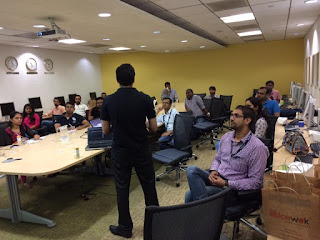Exadata X7 is now available
Oracle delivers breakthrough performance with the next-generation Exadata Database Machine—the ideal platform for your database. Oracle brings new innovations to the industry’s highest performing, most cost-effective database platform, a key component of Oracle’s comprehensive data management portfolio.
The Oracle Exadata Database Machine is engineered to deliver dramatically better performance, cost effectiveness, and availability for Oracle databases. Exadata features a modern cloud-based architecture with scale-out highperformance database servers, scale-out intelligent storage servers with state-of-the-art PCI flash, and an ultra-fast InfiniBand internal fabric that connects all servers and storage. Unique software algorithms in Exadata implement database intelligence in storage, compute, and InfiniBand networking to deliver higher performance and capacity at lower costs than
other platforms. Exadata runs all types of database workloads including Online Transaction Processing (OLTP), Data Warehousing (DW), In-Memory Analytics as well as consolidation of mixed workloads. Simple and fast to implement, the Exadata Database Machine powers and protects your most important databases. Exadata can be purchased and deployed on premises as the ideal foundation for a private database cloud, or can be acquired using a subscription model and deployed in the Oracle Public Cloud or Cloud at Customer with all infrastructure management performed by Oracle.
Reference http://www.oracle.com/technetwork/database/exadata/exadata-x7-2-ds-3908482.pdf
Oracle delivers breakthrough performance with the next-generation Exadata Database Machine—the ideal platform for your database. Oracle brings new innovations to the industry’s highest performing, most cost-effective database platform, a key component of Oracle’s comprehensive data management portfolio.
The Oracle Exadata Database Machine is engineered to deliver dramatically better performance, cost effectiveness, and availability for Oracle databases. Exadata features a modern cloud-based architecture with scale-out highperformance database servers, scale-out intelligent storage servers with state-of-the-art PCI flash, and an ultra-fast InfiniBand internal fabric that connects all servers and storage. Unique software algorithms in Exadata implement database intelligence in storage, compute, and InfiniBand networking to deliver higher performance and capacity at lower costs than
other platforms. Exadata runs all types of database workloads including Online Transaction Processing (OLTP), Data Warehousing (DW), In-Memory Analytics as well as consolidation of mixed workloads. Simple and fast to implement, the Exadata Database Machine powers and protects your most important databases. Exadata can be purchased and deployed on premises as the ideal foundation for a private database cloud, or can be acquired using a subscription model and deployed in the Oracle Public Cloud or Cloud at Customer with all infrastructure management performed by Oracle.
Reference http://www.oracle.com/technetwork/database/exadata/exadata-x7-2-ds-3908482.pdf





































